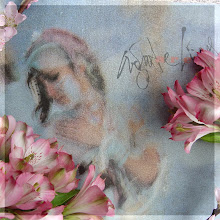Alstroemeria L. 1762 ..Alstroemeriaceae pics link here :
 Alstroemeria aurea syn. Alstroemeria aurantiaca, and Cultivars.The garden. An illustrated weekly journal by William Robinson (editor). Flora. by Heinrich Witte.Groningen, J.B. Wolters, 1868. Chromolithograph by G. Severeyns after Abraham Jacobus Wendel.
Alstroemeria aurea syn. Alstroemeria aurantiaca, and Cultivars.The garden. An illustrated weekly journal by William Robinson (editor). Flora. by Heinrich Witte.Groningen, J.B. Wolters, 1868. Chromolithograph by G. Severeyns after Abraham Jacobus Wendel.  Alstroemeria chilensis and Cultivars.
Alstroemeria chilensis and Cultivars.The garden. An illustrated weekly journal by William Robinson.
Revue de l’horticulture belge et étrangère by Frédéric Burvenich
 Alstroemeria aurea, Alstroemeria ligtu. 19 century. Link here:
Alstroemeria aurea, Alstroemeria ligtu. 19 century. Link here:
Alstroemeria pelegrina L. 1762, the type species of Alstroemeria. Curtis's Botanical Magazine
Alstroemeria/ Lily of the Incas/ Peruvian Lily
百合水仙/ 六出花/ 夢百合草/ インカの百合/ アルストロメリア.
Alstroemeria/ Lily of the Incas/ Peruvian Lily
百合水仙/ 六出花/ 夢百合草/ インカの百合/ アルストロメリア.
Alstroemeria, for the Swedish baron Clas Alströmer (Claus von Alstroemer, 9 aug. 1736- 5 mar. 1794), a naturalist and a pupil of Carolus Linnaeus (Carl von Linné, 23 maj 1707- 10 januari 1778). .
Alstroemeria was first described by the French botanist Louis Éconches Feuillée (1660- 18 avril 1732). In 1753, this plant's seeds were among many collected by Alströmer on a trip to South America.
As a pupil of Linnaeus, also a close friend, Alströmer brought Linnaeus this exotic, many-colour plants. Alstroemeria was hereby named for him by Linnaeus in 1762.


.
Langage de la Fleur__ 助 人, 日子幸福, 憧憬未來, 幸運 (紅), 凜然 (白)






4 則留言:
Bomarea is one of the two major genera in the plant family Alstroemeriaceae. Most occur in the Andes. Several species are occasionally found as garden plants.
It is essentially a twining version of their relatives in Alstroemeria, though some species stand freely upright.
Perhaps the most fascinating — and telltale — morphological trait of most if not all Alstroemeriaceae is the fact that the leaves are resupinate: they twist from the base so that what appears to be the upper leaf surface is in fact the lower leaf surface. http://en.wikipedia.org/wiki/Bomarea
Anders Dahl (17 Mar 1751– 25 May 1789): On a recommendation from Linnaeus, Dahl served as curator at the private natural museum and botanical garden of Clas Alströmer, a Linnaean disciple, at Kristinedal in Gamlestaden, outside Gothenburg. Dahl's employment involved several journeys in Sweden and abroad, where he collected natural history specimens both for Alströmer and himself. During that time, Alströmer received several plants from Linnaeus himself, and Dahl was able to review the Linnean collection, which is now included in the collections of the Swedish Museum of Natural History in Stockholm.
In 1781, Alströmer provided the financial backing for Linnaeus's son, Carl Linnaeus the Younger (1741-1783), to journey to England; on the Younger's death in 1783, Linnaeus sent Alströmer the herbarium parvum. This herbarium consisted of duplicates sorted out from Linnaeus' personal herbarium and other plants collected by his son. Dahl catalogued every specimen in the herbarium in his own handwriting, noting whether they came from "a Linné P[ater]." (father) or "a Linné f[ilius]." (son). It is clear that Dahl also received specimens; some specimens are labelled "Dahl a Linné P." or "Dahl a Linné f." On Alströmer's death in 1794, the herbarium was left to the Royal Swedish Academy of Sciences, then to the Swedish Museum of Natural History. The specimens Dahl and Alströmer received from Linnaeus and his son are in the Linnean herbarium in Stockholm.
When Alströmer experienced financial losses in 1785 and moved to his estate at Gåsevadsholm, outside Kungsbacka, Dahl followed.
Lapageria rosea (Chilean bellflower) roots were once collected and used as a substitute for sarsaparilla (沙士, made from Smilax ornata roots). In 1977 the plant was given legal protection in Chile.
https://en.wikipedia.org/wiki/Lapageria
The differences between the two genera are: in Alstreria the fruit is a dry explosive capsule and the seed coat is dry, in Bomarea the seeds are always adapted to animal distribution...
http://www.scielo.org.pe/scielo.php?script=sci_arttext&pid=S1727-99332006000100002
張貼留言